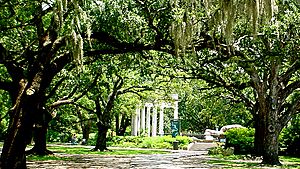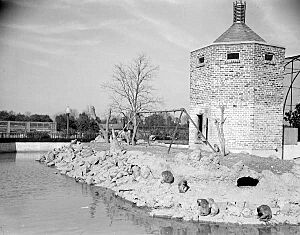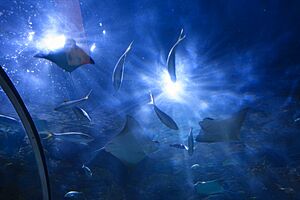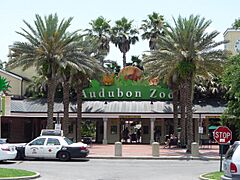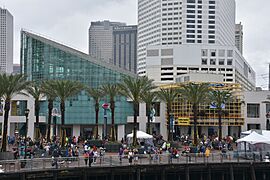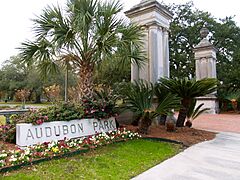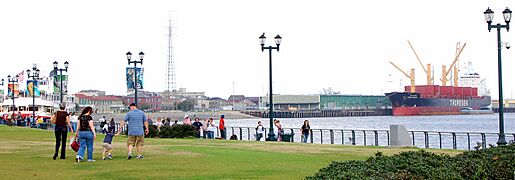Audubon Nature Institute facts for kids
The Audubon Nature Institute is a group of museums and parks in New Orleans, Louisiana. They are all about nature and helping animals. Some of their famous places include the Audubon Zoo, the Audubon Aquarium, and Audubon Park. Lots of people visit these places every year to learn about animals and nature.
Contents
History of Audubon Nature Institute
How Audubon Park Began
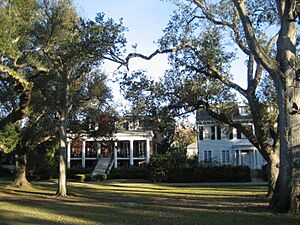
The story of the Audubon Nature Institute started with Audubon Park. This land was once home to Native Americans. Later, it belonged to New Orleans' first mayor, Étienne de Boré. He started the first sugar plantation in the country there.
In 1850, the land was given to the city. During the US Civil War, it was used as a military camp and a hospital. In 1866, the "Buffalo Soldiers" (the 9th Cavalry Regiment) started their service there. They were important in American African-American history.
Creating a Public Park
In 1884, a big event called the World's Industrial and Cotton Centennial Exposition happened on the land. This helped turn it into a city park. The city had planned for a park since 1871. In 1886, the park was named Audubon Park.
This name honored John James Audubon, a famous artist and naturalist. He painted many of his well-known Birds of America pictures while in Louisiana.
In 1894, a group was chosen to develop the park. By 1900, John Charles Olmsted, a famous landscape architect, was in charge. His family firm also designed New York City's Central Park. He helped turn the swampy land into the beautiful park we see today.
From Decline to New Life in the 1900s
In 1914, the Audubon Commission was created to take care of Audubon Park. A bird cage was added in 1916, and people loved it. This led to calls for a full zoo. The New Orleans Zoological Society was formed, and donations helped build animal enclosures.
The first elephant arrived in 1924, bought by Louisiana schoolchildren. An aquarium and a sea lion pool were also added. By 1929, the zoo had hundreds of animals.
During the Great Depression in the 1930s, private donations stopped. The Works Progress Administration (WPA), a government program, helped build new zoo buildings. In 1938, the Merz Memorial Zoo opened.
However, the zoo struggled in the 1950s and 60s. It was called an "animal ghetto" in 1958. In 1970, the Humane Society of the United States told the zoo to "clean up or close up."
Rebuilding the Zoo
In 1972, people voted to give nearly $2 million to fix the zoo. Volunteers formed "Friends of the Zoo." In 1973, Ron Forman joined with a big plan for the zoo. He helped expand the Audubon Zoo to 58 acres. This allowed for large, natural habitats that looked like wild places. These included the African Savanna and North American Grasslands.
Woldenberg Park opened in 1989. That same year, "Friends of the Zoo" became the Audubon Nature Institute. The Audubon Aquarium opened in 1990.
Focus on Conservation in the 2000s
In the 2000s, the Aquarium added a new section with a theater. Woldenberg Park also grew larger. The institute continued to focus on protecting animals and nature.
Effects of Hurricane Katrina
In 2005, Hurricane Katrina caused a lot of damage. It stopped all income for the Audubon Nature Institute. Many employees had to be laid off. However, Aquarium staff stayed during the storm and flooding. They worked hard to care for the animals.
Other Interesting Facts
The institute helped make an IMAX movie called "Hurricane on the Bayou". It was released in 2006, one year after Hurricane Katrina.
Gallery
Some of the areas managed by the Audubon Nature Institute include:


